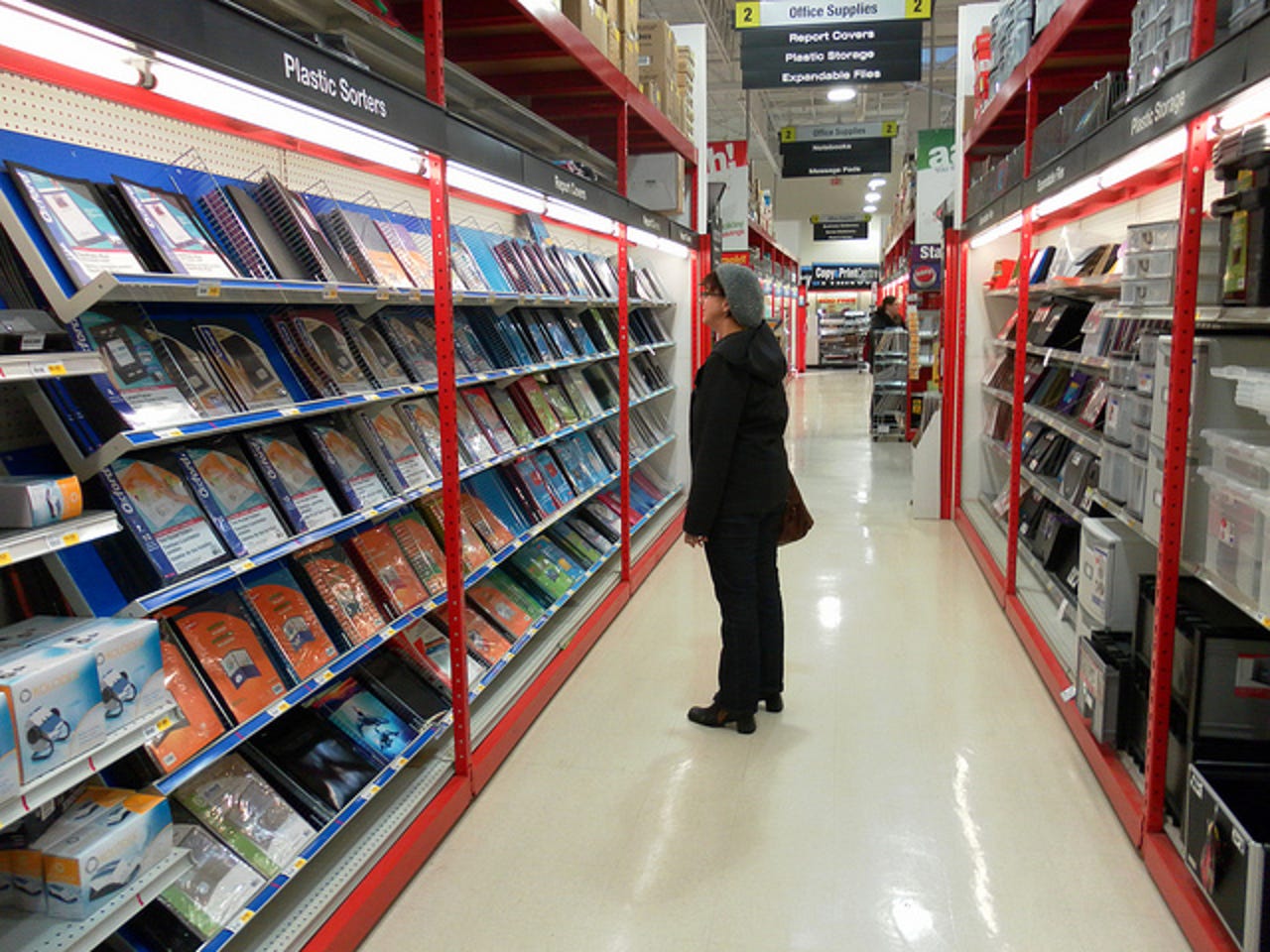Retail's love-hate relationship with mobile device-equipped customers


There's an interesting bit of information tucked into market reseatch firm ForeSee's latest Mobile Satisfaction Index.
No, it's not the fact that Amazon continues to dominate digital retail channels -- you probably knew that already. (As an aside, I abstain from using the awful term "e-tail." No, I won't do it. You can't make me.)
And it's not the fact that shoppers find the "mobile retail experience" improving, because, well, of course -- new technology gets better as it matures.
No, the most interesting bit in this brief report is the trend that retailers like to call "showrooming" -- that is, scoping out a product in person, then buying it online -- usually for less -- from a rival, using a mobile device. Often, this happens from within the brick-and-mortar store itself. (As far as screwing a company over goes, it doesn't get any more flagrant than this.)
But you can't blame shoppers -- they do what they're incentivized to do. And the incentive of an online retailer is that it's often cheaper, more convenient and less of a hassle than dealing with the often-poor or lacking service found in many big box retail stores. (Circuit City or Best Buy, anyone?) The ability to drive or walk a mile and put your paws on the product is just icing on the cake.
ForeSee's statistics offer some granularity to how widespread this trend is.
It found that, during the 2012 holiday season:
- Nearly 70 percent of shoppers used a mobile phone while in a retail store;
- 62 percent of shoppers accessed the website or app of the store in which they were standing;
- 37 percent of shoppers accessed the website or app of a competitor to the store in which they were standing.
This presents both opportunity and risk, ForeSee says.
"Retailers need to engage their customers equally well through all channels, especially through mobile sites and apps, or risk losing customers and sales to competitors that do a better job of meeting their needs," report co-author Eric Feinberg said.
Translation: mobile devices allow consumers to instantly level the playing field. Retailers can no longer hope that they won't comparison shop due to distance, inconvenience or any other such factor.
People are definitely using mobile devices more frequently as they shop.
According to ForeSee:
- Shoppers find desktop and mobile shopping experiences similar.
- 57 percent of them visit the retailer's website as a first step to shop.
- Still, just 6 percent of them visit the retailer's mobile offerings as a first step to shop.
The retail king of mobile? Amazon, of course, with Apple and QVC close behind.
Here's a look at some of the rankings, arranged according to the company's satisfaction index score:
- 85 - Amazon.com
- 83 - Apple, QVC
- 80 - NewEgg, Victoria's Secret
- 79 - Barnes & Noble, Footlocker, HSN, Costco
- 78 - HP, Kohl's, SportsmansGuide.com, Best Buy
- 77 - Buy.com, J.C. Penney, Macy's, One King's Lane, Staples, Target, Walmart
- 75 - Gilt.com
- 74 - Overstock, RueLaLa, Sears
This itself is interesting. Amazon tops the list but it has every incentive to make its online platform easy to use; so does NewEgg. Apple and Victoria's Secret, of course, have a two-pronged approach and aren't worried about using their stores to showroom for their own websites, since they have strong control over their products. And Barnes & Noble is treading carefully -- its brick-and-mortar footprint has been shrinking, but it needs to ensure it doesn't hand customers to Amazon as people move to digital book buying.
What can retailers take from all this? That people don't feel strange about buying online, even via their mobile phones, if it's easy and intuitive. But they still want to touch something.
Photo: Michael Senchuk/Flickr